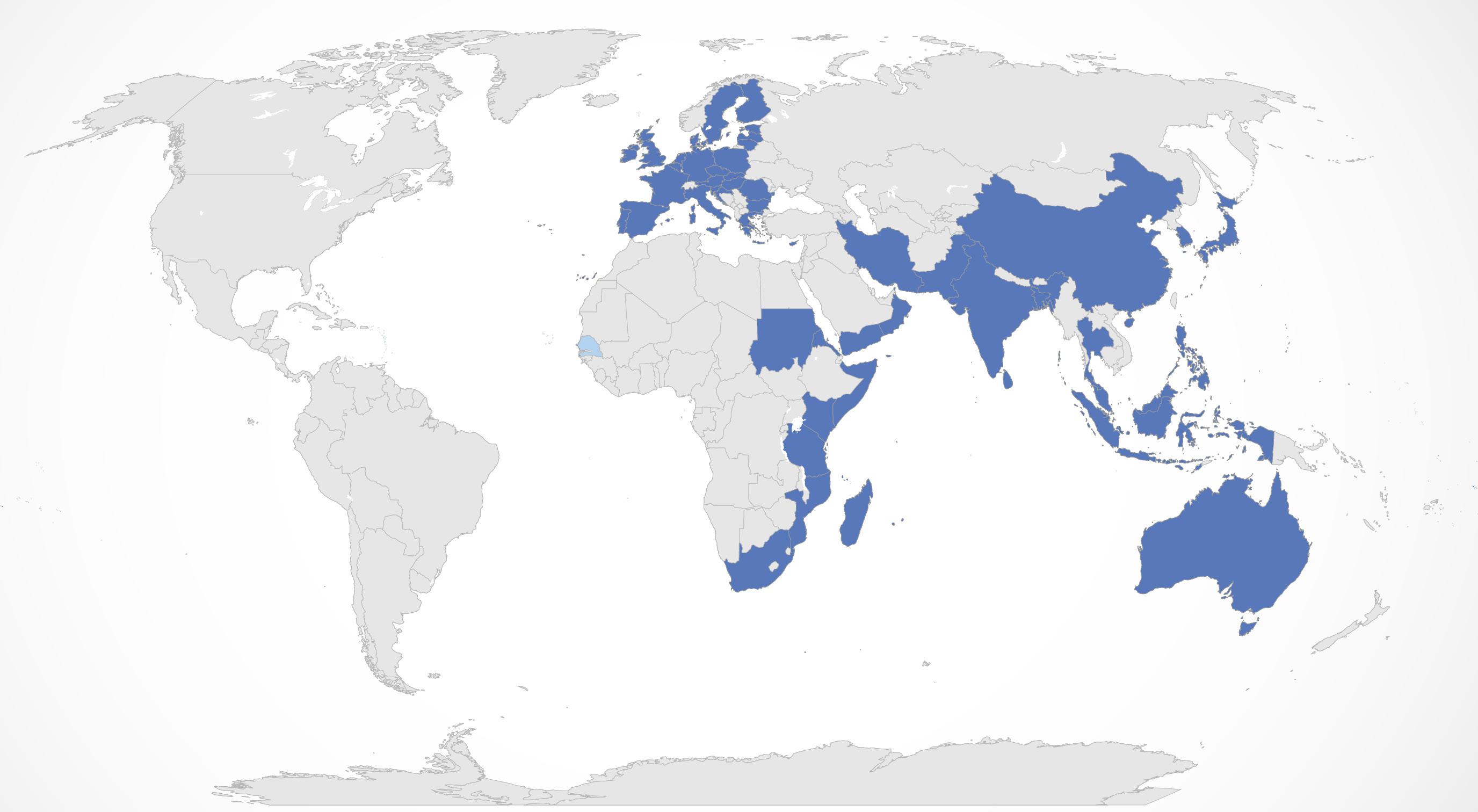
17 minute read
Sharks and the Indian Ocean Tuna Commission (IOTC)
Map showing Contract Parties (dark blue) and Cooperating Non-Contracting Parties (light blue) in the Indian Ocean Tuna Commission (IOTC) (as of February 2022). Source: www.iotc.org
Sharks* and the *The term ‘shark’ refers to all species of sharks, rays, and chimaeras Indian Ocean Tuna Commission (IOTC)
Advertisement

Written by Alexandra Morata
Reviewed by Paul de Bruyn
IOTC Secretariat Staff | Science Manager
Daniel Fernando
Blue Resources Trust | Co-Founder | Director of the Fisheries and Policy Programme IUCN SSC Shark Specialist Group | Indian Ocean Regional Group | Regional Vice-Chair
Evgeny Romanov
CAP RUN - CITEB (Centre technique de recherche et de valorisation des milieux aquatiques)
What is IOTC?
Fish Stocks refer to a The Indian Ocean Tuna Commission community or subpopula(IOTC) is an intergovernmental organ- tion of a certain species isation responsible for the manage- of fish, which in fisheries ment of tuna and tuna-like species in management is considthe Indian Ocean. Its main objective ered a single unit. is 'to promote cooperation among the Contracting Parties (Members) and Cooperating Non-Contracting Parties (CNCPs) of the IOTC with a view to ensuring, through appropriate management, the conservation and optimum utilisation of stocks covered by the organisation's establishing Agreement and to encourage sustainable development of fisheries based on such stocks.'
The IOTC was established in 1993 at the 105th Session of the Council of the Food and Agriculture Organization of the United Nations (FAO) and entered into force in 1996. Decisions by IOTC members are legally binding. IOTC Members can make decisions related to the management of tuna and tuna-like resources and their associated environment that are binding on all Members and Cooperating Non-Contracting Parties. These decisions result in Conservation Management Measures (CMMs) that are adopted by not only Members and CNCPs, but also the fisheries that target the species focused in each CMM.
The IOTC area of competence is defined as being FAO statistical fishing areas 51 (Western Indian Ocean) and 57 (Eastern Indian Ocean) and adjacent seas north of the Atlantic Convergence (e.g., sub-area 51.1: Red Sea). (Note: the FAO western boundary lies at 30° E, while the IOTC area of competence lies at 20° E).
Function and responsibilities
The Commission has four essential functions and responsibilities which enable it to achieve its four main objectives. These are: • to monitor the conditions and trends of stocks and gather, analyse, and disseminate scientific information, catch and effort statistics, and other data relevant to the conservation and management of the stocks and to fisheries based on the stocks; • to encourage, recommend, and coordinate research and development activities in respect of the stocks and fisheries covered by the IOTC; • to adopt – on the basis of scientific evidence – Conservation and Management Measures (CMMs) to ensure the conservation of the stocks covered by the Agreement and to promote the objective of their optimum utilisation throughout the Area; and • to keep under review the economic and social aspects of the fisheries.
Structure of Commission
The IOTC Commission comprises members and states that have an interest in fishing within Indian Ocean waters. Commission Contracting Parties (Members) are Indian Ocean coastal countries, members of the United Nations or one of its specialised agencies fishing for tuna in the Indian Ocean. Commission Cooperating Non-Contracting Parties (CNCPs) are recognised States interested in the Indian Ocean fisheries of tuna and tuna-like species. Collectively, Contracting Parties and Cooperating Non-Contracting Parties are called CPCs and work within the IOTC Area of Competence. In total, there are 58 CPCs (including 27 EU countries and two French Overseas Territories (OT)), 57 of which are Members, and one is a CNCP.
Subsidiary Bodies
There are several subsidiary bodies within the Commission which include: • Compliance Committee (CoC): Monitors the compliance of the
CPCs with adopted CMMs. • Standing Committee on Administration and Finance: Advises the
Commission on administrative and financial matters. • Scientific Committee (SC): Composed of scientists amongst Members and experts outside the SC. They collect, process, disseminate and analyse fishery data; provide advice to the Commission on the status of stocks and the management actions necessary to ensure the sustainability of the fishery; and develop and coordinate cooperative research programs in support of fisheries management. There are also seven science Working Parties (WP) with the primary function to support the Scientific Committee so that it can fulfil its mandate to provide the Commission with the information it needs to manage fish stocks under the IOTC mandate and the ecosystems in which the fisheries operate. The most common objective is to provide the Scientific Committee with analyses of the current status of the stocks and an evaluation of possible management actions. Some Working Parties are established to analyse and produce recommendations on a specific technical problem. Commission Contracting Parties (Members) Acceptance Australia 13/11/1996 Bangladesh, People’s Republic of 24/04/2018 China 14/10/1998 Comoros 14/08/2001 Eritrea 09/08/1994 European Union 27/10/1995 France (OT) 03/12/1996 India 13/03/1995 Indonesia 20/06/2007 Iran, the Islamic Republic of 28/01/2002 Japan 26/06/1996 Kenya 29/09/2004 Korea, Republic of 27/03/1996 Madagascar 10/01/1996 Malaysia 22/05/1998 Maldives 13/07/2011 Mauritius 27/12/1994 Mozambique 13/02/2012 Oman, Sultanate of 05/04/2000 Pakistan 27/04/1995 Philippines 09/01/2004 Seychelles 26/07/1995 Somalia 22/05/2014 Sri Lanka 13/06/1994 South Africa 16/02/2016 Sudan 03/12/1996 Tanzania 18/04/2007 Thailand 17/03/1997 United Kingdom of Great Britain & Northern Ireland 22/12/2020 Yemen 20/07/2012

IOTC Area of Competence. Source: www.iotc.org
1. WP on Billfish (WPB) 2. WP on Data Collection and Statistics (WPDCS) 3. WP on Methods (WPM) 4. WP on Neritic Tunas (WPNT) 5. WP on Temperate Tunas (WPTmT) 6. WP on Tropical Tunas (WPTT) 7. WP on Ecosystems and Bycatch (WPEB)
Even though sharks are not part of the 16 tuna and tuna-like species directly under the IOTC mandate, they are frequently caught in association with fisheries targeting IOTC species. Some fleets are known to actively target sharks and IOTC species simultaneously.
CPCs are required to report information at the same level of detail as for the 16 species directly under the IOTC mandate. The following table includes the main species reportedly caught in IOTC fisheries; however, this list is not exhaustive, and many other shark species are likely to interact with these fisheries. The Working Party on Ecosystems and Bycatch is responsible for 'reviewing and analysing matters relevant to bycatch, byproduct and non-target species which are affected by IOTC fisheries for tuna and tuna-like species (i.e., sharks, marine turtles, seabirds, marine mammals and other fishes), as well as the ecosystems in which they operate; and to develop mechanisms which can be used to better integrate ecosystem considerations into the scientific advice provided by the Scientific Committee to the Commission.'
Order
Family Carcharhiniformes Carcharhinidae Carcharhiniformes Carcharhinidae Carcharhiniformes Carcharhinidae Carcharhiniformes Carcharhinidae Carcharhiniformes Sphyrnidae Carcharhiniformes Sphyrnidae Lamniformes Alopiidae
Lamniformes Lamniformes Alopiidae Alopiidae
Lamniformes Lamnidae
Lamniformes Lamnidae
Lamniformes Lamnidae
Lamniformes Lamnidae
Lamniformes Pseudocarchariidae
Myliobatiformes Myliobatiformes Orectolobiformes Dasyatidae Mobulidae Rhincodontidae Scientific Name Carcharhinus falciformis Carcharhinus longimanus Galeocerdo cuvier Prionace glauca Sphyrna lewini Sphyrna spp. Alopias superciliosus Alopias pelagicus Alopias vulpinus Carcharodon carcharias Isurus oxyrinchus Isurus paucus Lamna nasus Pseudocarcharias kamoharai Pteroplatytrygon violacea Mobula spp. Rhincodon typus Common Name Silky Shark Oceanic Whitetip Shark Tiger Shark Blue Shark Scalloped Hammerhead Shark Hammerhead Sharks Bigeye Thresher Pelagic Thresher Common Thresher Great White Shark Shortfin Mako Longfin Mako Porbeagle Shark Crocodile Shark Pelagic Stingray Mobulid Rays Whale Shark
Resolutions that apply to all sharks are highlighted in the table on the next page. Additional details are not provided but can be found online through the links provided. For example, Resolution 15/01 on the recording of catch and effort data by fishing vessels in the IOTC area of competence sets out the minimum logbook requirements for purse seine, longline, gillnet, pole and line, handline and trolling fishing vessels over 24 metres in length overall and those under 24 metres if they fish outside the Exclusive Economic Zones (EEZ) of their flag States within the IOTC area of competence. As per this Resolution, the catch of all sharks must be recorded (retained and discarded). Similarly, Resolution 15/02 on mandatory statistical reporting requirements for IOTC Contracting Parties and Cooperating Non-Contracting Parties (CPCs) indicated that the provisions applicable to tuna and tuna-like species apply to shark species.
On the other hand, a summary of the information in resolutions on a shark species or species group is provided. There are currently 16 active resolutions covering 17 shark species/groups and no recommendations.
Conservation and Management Measures (CMMs)
The CPCs meet annually during the "Session of the Commission" to propose CMMs concerning the management of tuna and tuna-like species under the IOTC mandate and the fisheries that target them. These decisions are passed in the form of either Resolutions or Recommendations.
Resolutions are binding on Commission Members unless there is a specific objection on the part of a Member and require a twothirds majority of Members present and voting to adopt them. Recommendations are not binding on Commission Members and rely on voluntary implementation. The Commission may, by a simple majority of its Members present and voting, adopt Recommendations concerning conservation and management measures of the stocks for furthering the objectives of the IOTC Agreement. Resolutions and Recommendations are structured as: xx/yy, where "xx" refers to the year it was implemented, and "yy" the order it was listed that year.
The first resolution directly related to sharks was 05/05 Concerning the conservation of sharks caught in association with fisheries managed by IOTC, which is currently superseded by Resolution 17/05 (Resolution 05/05). The oldest active resolution directly related to sharks was adopted in 2012 and targeted the conservation of Thresher Sharks (Alopias spp.) (Resolution 12/09). Since then, several additional resolutions have been implemented by the IOTC that apply to shark conservation in the IOTC area of competence. On the other hand, as recommendations are not legally binding on the CPCs, few are active and none apply to sharks.
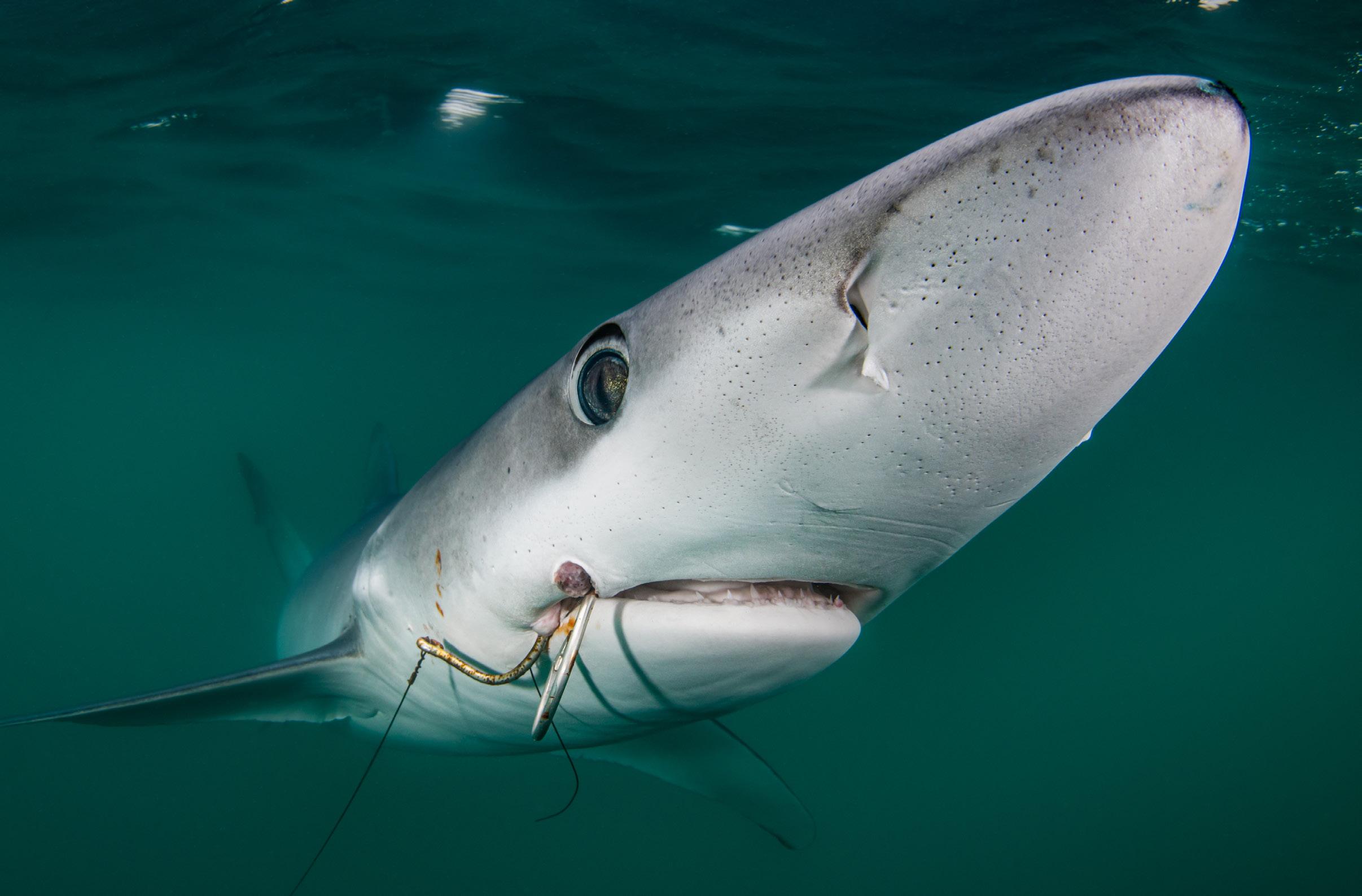

Double-hooked Blue Shark, Rhode Island
On establishing a programme for transhipment by large-scale fishing vessels
On procedures on a Fish Aggregating Devices (FADs) management plan
On the conservation of Mobulid Rays caught in association with fisheries in the Area Active and supersedes resolution 19/06
Active and supersedes resolution 18/08
Active
On a ban on discards of bigeye tuna, skipjack tuna, Active and supersedes yellowfin tuna, and non-targeted species caught by resolution 17/04 purse seine vessels in the IOTC Area of Competence
On management measures for the conservation of Blue Active Shark caught in association with IOTC fisheries
On BIOFAD experimental project Active
On measures applicable in case of non-fulfilment of reporting obligations in the IOTC Active and supersedes resolution 16/06
On the conservation of sharks caught in association Active and supersedes with fisheries managed by IOTC resolution 05/05
On a ban on discards of Bigeye Tuna, Skipjack Tuna, Superseded by Yellowfin Tuna, and non-targeted species caught by resolution 19/05 purse seine vessels in the IOTC Area of Competence
On the use of artificial lights to attract fish to drifting Active and supersedes fish aggregating devices resolution 15/07
On the recording of catch and effort data by fishing Active and supersedes vessels in the IOTC Area of Competence resolution 13/03
Mandatory statistical requirements for IOTC Members Active and supersedes and Cooperating Non-Contracting Parties (CPCs) resolution 10/02
On a ban on discards of bigeye tuna, skipjack tuna, Superseded by yellowfin tuna, and a recommendation for non-targeted resolution 17/04 species caught by purse seine vessels in the IOTC area of competence
On a Fish Aggregating Devices (FADs) working group Active
On the conservation of Whale Sharks (Rhincodon typus) Active
On a scientific and management framework on the Active Conservation of Sharks species caught in association with IOTC managed fisheries.
On a ban on discards of bigeye tuna, skipjack tuna, Superseded by yellowfin tuna and non-targeted species caught by purse resolution 15/06 seine vessels in the IOTC area of competence
On the conservation of Thresher Sharks (family Alopiidae) Active and supersedes caught in association with fisheries in the IOTC Area of resolution 10/12 Competence
On a regional observer scheme Active & supersedes resolution 10/04
On the conservation of thresher sharks (family Alopiidae) Superseded by caught in association with fisheries in the IOTC area of resolution 12/09 competence

Resolution 19/03 Prohibits all vessels (including artisanal) from intentionally fishing, retaining on board, transhipping, landing, storing any part or whole carcass of Mobulid Rays caught in the Area. Mobulid Rays are to be released unharmed. CPCs shall ensure that fishers are aware of and use proper mitigation, identification, handling and releasing techniques and keep onboard all necessary equipment for the release of Mobulid Rays. The only exception is for subsistence fisheries. CPCs shall develop sampling plans to monitor the Mobulid Rays catches by the subsistence and artisanal fisheries and are encouraged to investigate at-vessel and post-release mortality in mobulids.
The following species are affected by the IOTC Resolution 19/03: Mobulid Rays (Mobula spp.)
A subsistence fishery is a fishery where the fish caught are consumed directly by the families of the fishers rather than being bought by middle-(wo)men and sold at the next larger market, per the FAO Guidelines for the routine collection of capture fishery data. FAO Fisheries Technical Paper. No. 382. Rome, FAO. 1999. 113p. Artisanal fishing refers to fisheries other than longline or surface fisheries (i.e., purse seines, pole and line, gillnet fisheries, handline and trolling vessels), registered in the IOTC Record of Authorized Vessels (Definition in footnote 1 of Res. 15/02).
Resolution 18/02 Imposes obligations on CPCs whose vessels catch Blue Shark in the Area to ensure that effective management measures are in place to support the sustainable fishing of Blue Sharks, in line with IOTC’s Convention objective. Each CPC shall ensure that its vessels catching Blue Shark associated with IOTC fisheries in the Agreement area record their catch.
The following species are affected by the IOTC Resolution 18/02: Blue Shark (Prionace glauca)
Resolution 17/05 Introduces measures to educate fishers on full utilisation of their shark catches, except for species prohibited by the IOTC. It prohibits the removal of shark fins on board vessels for sharks landed fresh and provides a ratio (not more than 5% fins of the weight of sharks on board) for sharks landed frozen. The purchase of shark fins that have been removed, retained on-board, transhipped or landed in contravention to this Resolution are also prohibited. CPCs have specific reporting requirements regarding fisheries involving sharks.
Resolution 13/06 (Objection from India: Not binding on India) Concerned with establishing a scientific framework for the conservation and management of shark species in the Area, it requires the Commission to determine the shark species subjected to IOTC CMMs. Prohibits all fishing vessels (except artisanal fishing vessels) from retaining on board, tranship, land or store any part or whole carcass of Oceanic Whitetip Sharks and, if caught, to be released unharmed. CPCs shall encourage fishers to take other shark protection measures. Article IX (paragraphs 5, 6 and 7) of the IOTC Agreement refers to the ‘Objections’ procedure for CMMs adopted by the Commission. Specifically:
‘Para. 5. Any Member of the Commission may, within 120 days from the date specified or within such other period as may be specified by the Commission under paragraph 4, object to a [CMM] adopted under paragraph 1. A Member of the Commission which has objected to a measure shall not be bound thereby. Any other Member of the Commission may similarly object within a further period of 60 days from the expiry of the 120-day period. A Member of the Commission may also withdraw its objection at any time and become bound by the measure immediately if the measure is already in effect or at such time as it may come into effect under this article.
Para. 6. If objections to a measure adopted under paragraph 1 are made by more than one-third of the Members of the Commission, the other Members shall not be bound by that measure; but this shall not preclude any or all of them from giving effect thereto.
Para. 7. The Secretary shall notify each Member of the Commission immediately upon receipt of each objection or withdrawal of objection.’
Resolution 13/05 Requires CPCs to ban their vessels from intentionally setting a purse seine net around a Whale shark in the Area if it is sighted before the commencement of the set. They must also require that, in the event that a Whale Shark is unintentionally encircled in the purse seine net, the shark shall be released unharmed while considering the crew’s safety; and report the incident to the relevant authority. CPCs shall adopt Fish Aggregating Device designs that reduce the incidence of entanglement.
The following species are affected by IOTC Resolution 13/05: Whale Shark (Rhincodon typus)
Resolution 12/09 Prohibits IOTC member or CPC fishing vessels from retaining on board, tranship, land, store, sell or offer for sale any part or whole carcass of Thresher Sharks (Alopias spp.). Any Thresher Sharks caught shall be released unharmed, and the incident reported, as required by IOTC data reporting procedures. The Resolution also supports research on Thresher Sharks conducted with approval from the IOTC.
The following species are affected by IOTC Resolution 12/09: Bigeye Thresher (Alopias superciliosus) Pelagic Thresher (Alopias pelagicus) Common Thresher (Alopias vulpinus)
References * Indian Ocean Tuna Commission. Accessed on 07 February 2022. Home. www.iotc.org * Indian Ocean Tuna Commission. Accessed on 07 February 2022. Basic Texts. iotc.org/about-iotc/basic-texts * Indian Ocean Tuna Commission. Accessed on 07 February 2022.
The Commission. iotc.org/about-iotc * Indian Ocean Tuna Commission. Accessed on 07 February 2022.
Structure of the Commission. iotc.org/about-iotc/structure-commission * Indian Ocean Tuna Commission. Accessed on 07 February 2022.
Status summary for species of tuna and tuna-like species under the IOTC mandate, as well as other species impacted by IOTC fisheries. iotc.org/science/status-summary-species-tuna-and-tuna-species-under-iotcmandate-well-other-species-impacted-iotc * Indian Ocean Tuna Commission. (2021). Compendium of active conservation and management measures for the Indian Ocean Tuna Commission. Publication.
December 17. iotc.org/cmms * Objection from India to IOTC Resolutions 13/02, 13/03, 13/06 AND 13/07.
Accessed on 09 February 2022. iotc.org/documents/objection-india-iotc-resolutions-1302-1303-1306-and-1307

Reef Manta Ray Mobula alfredi
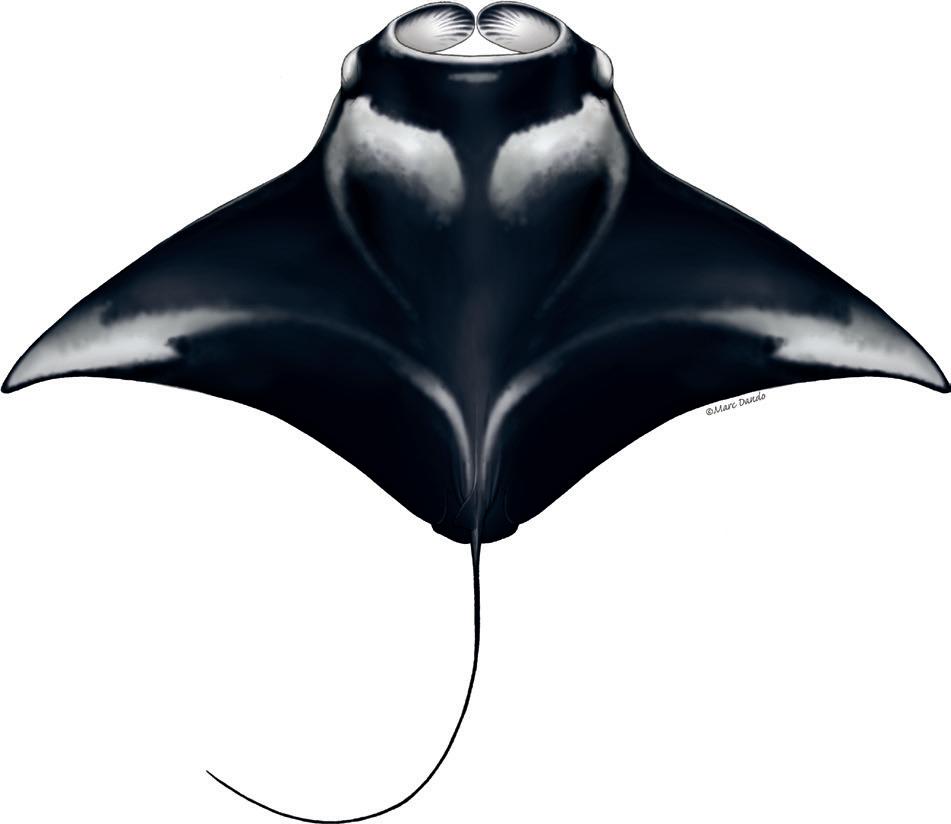

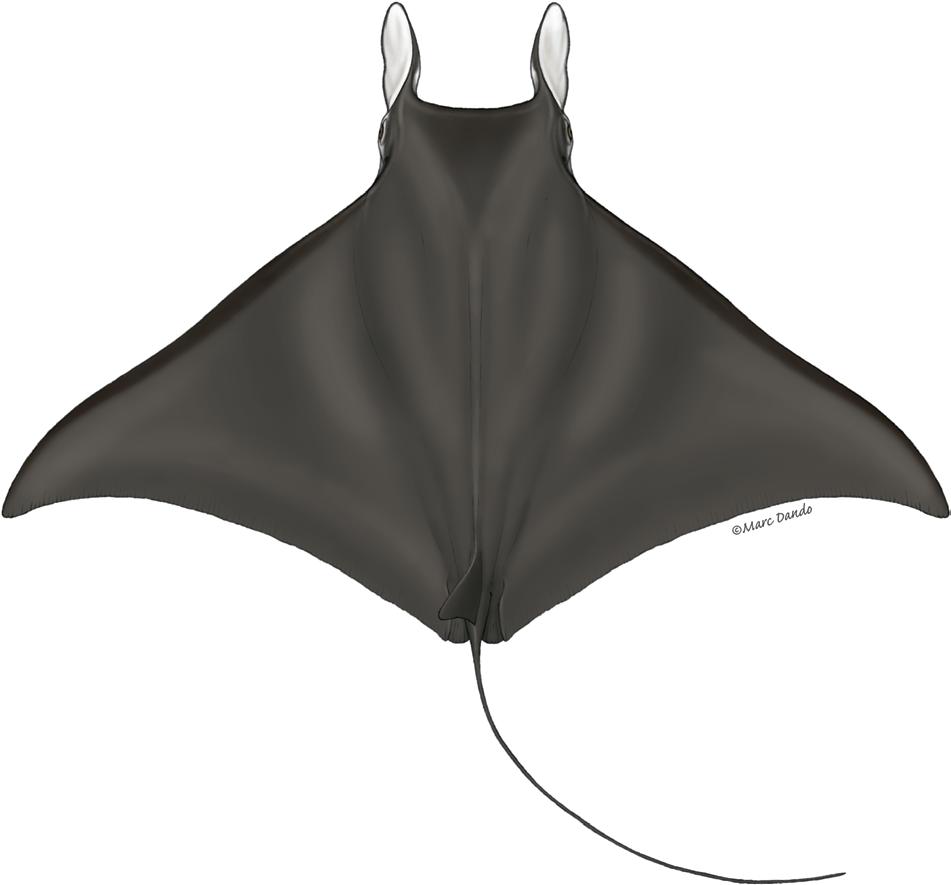


Munk’s Pygmy Devil Ray Mobula munkiana West Atlantic Devil Ray Mobula hypostoma

Spinetail Devil Ray Mobula mobular Longhorned Pygmy Devil Ray Mobula eregoodoo
Shortfin Pygmy Devil Ray Mobula kuhlii
East Atlantic Pygmy Devil Ray Mobula rochebrunei


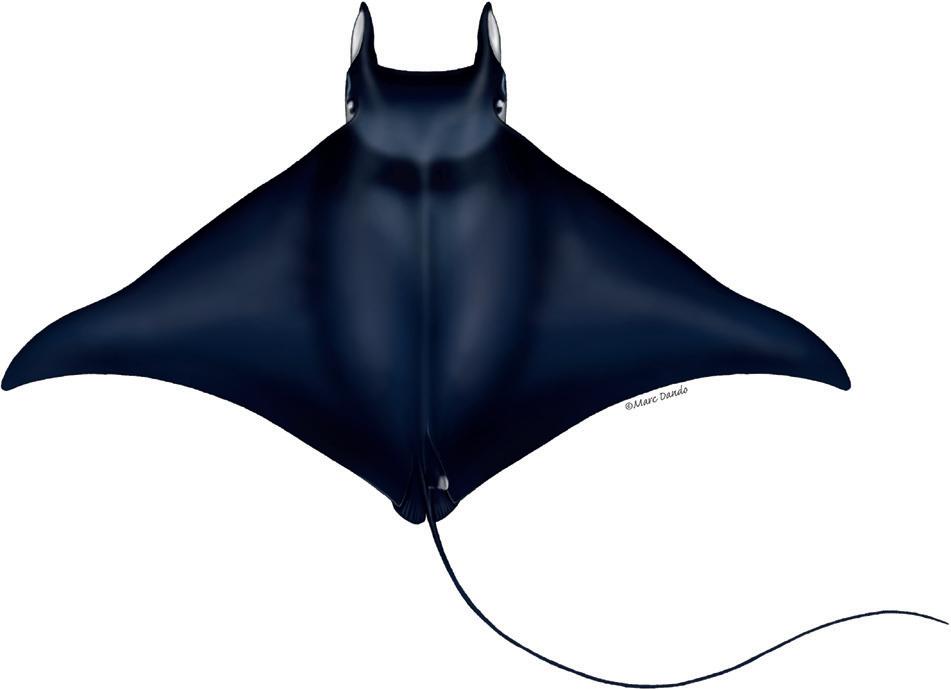
Sicklefin Devil Ray Mobula tarapacana Bentfin Devil Ray Mobula thurstoni
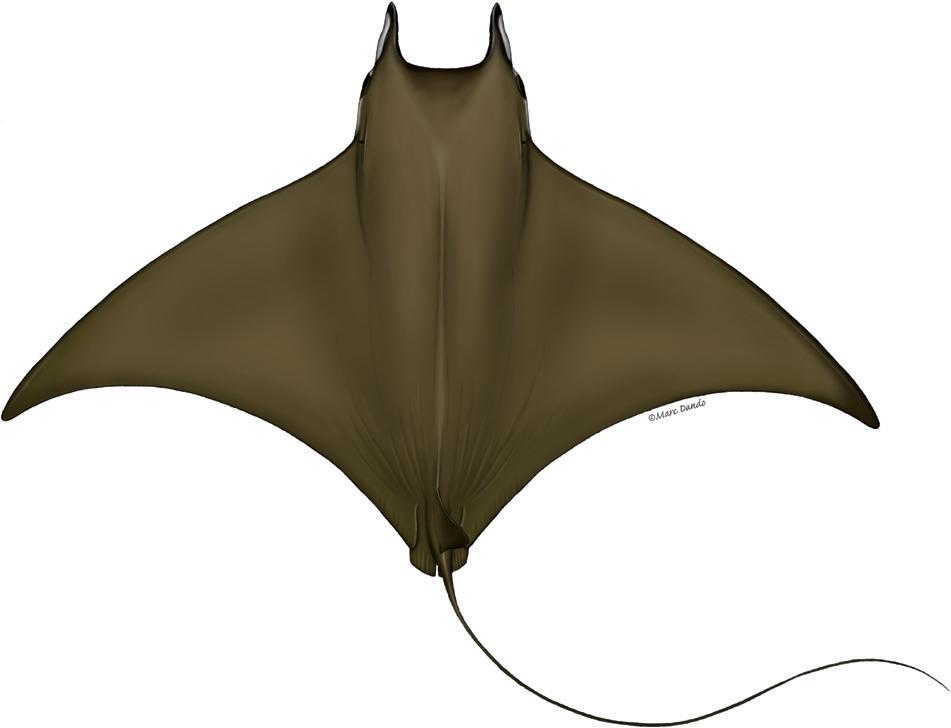
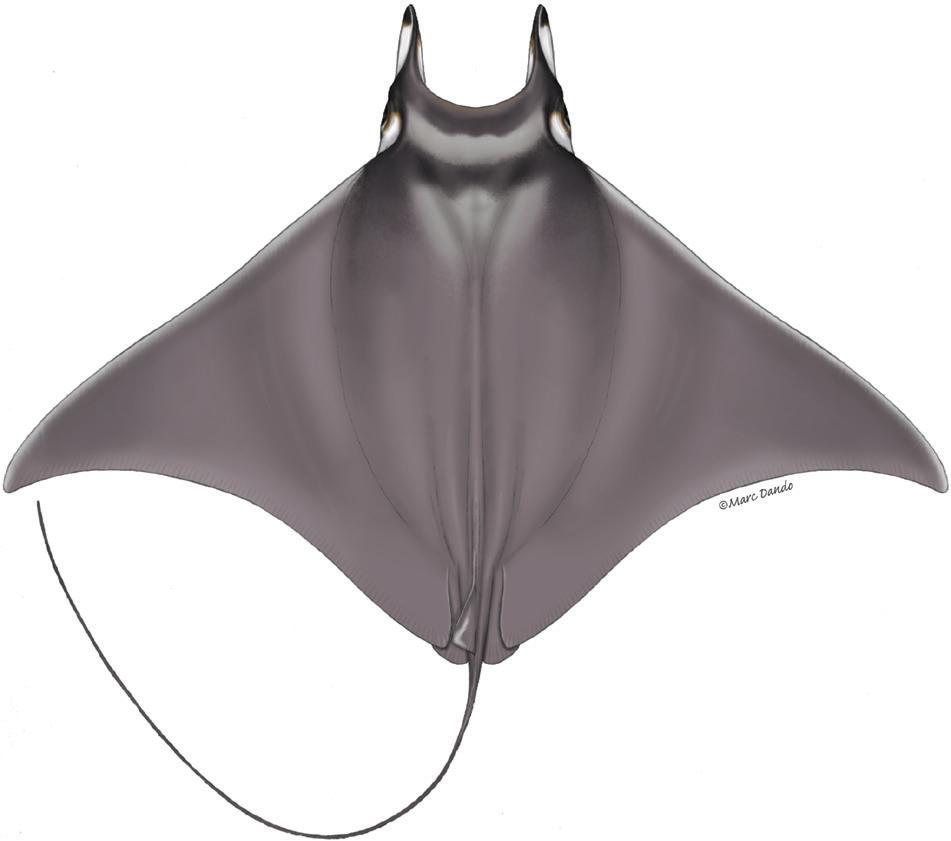

Artwork by © Marc Dando Pelagic Thresher Alopias pelagicus


Bigeye Thresher Alopias superciliosus


Common Thresher Alopias vulpinus


Silky Shark Carcharhinus falciformis

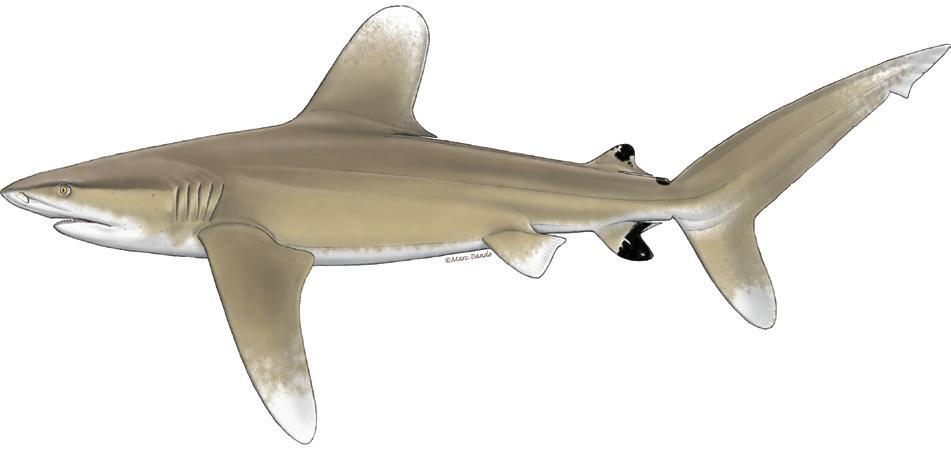
Oceanic White Tip Carcharhinus longimanus
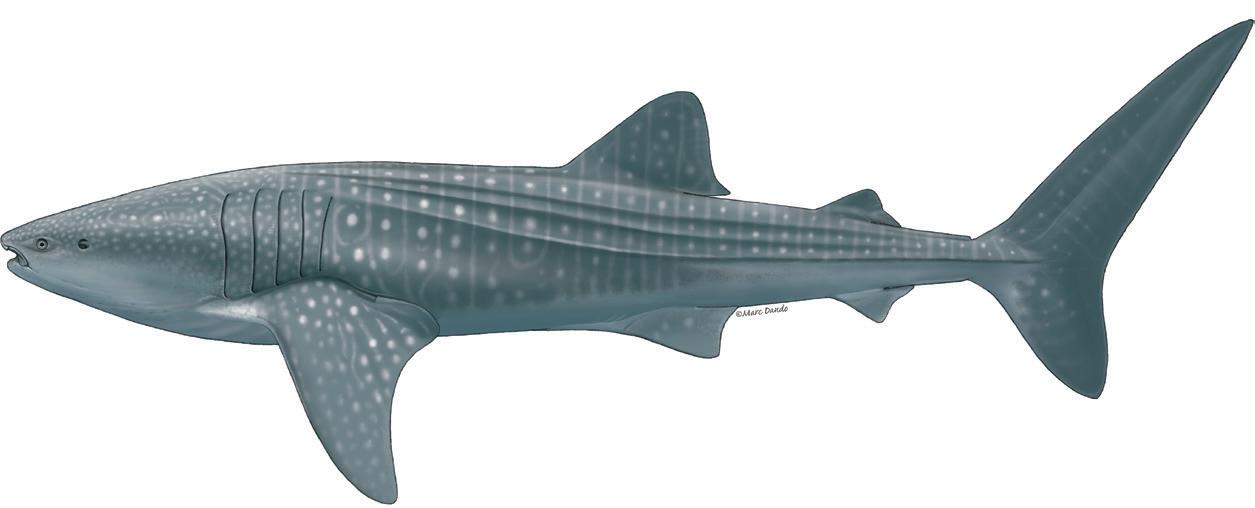

White Shark Carcharodon carcharias


Tiger Shark Galeocerdo cuvier Longfin Mako Isurus paucus
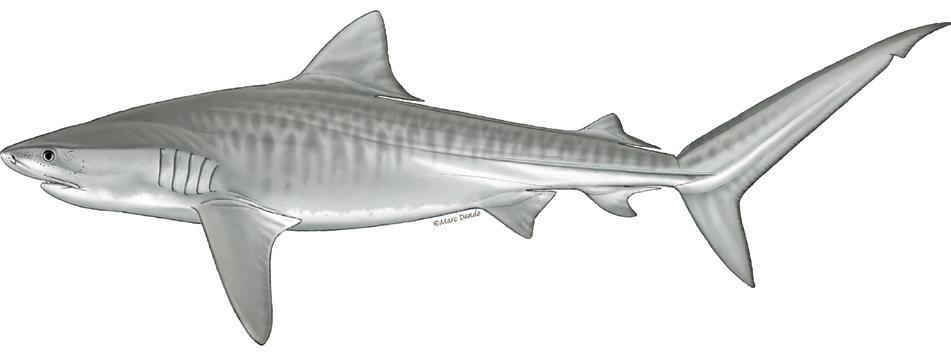



Porbeagle Lamna nasus
Blue Shark Prionace glauca
Crocodile Shark Pseudocarcharias kamoharai
Whale Shark Rhincodon typus
Scalloped Hammerhead Sphyrna lewini
Great Hammerhead Sphyrna mokarran










